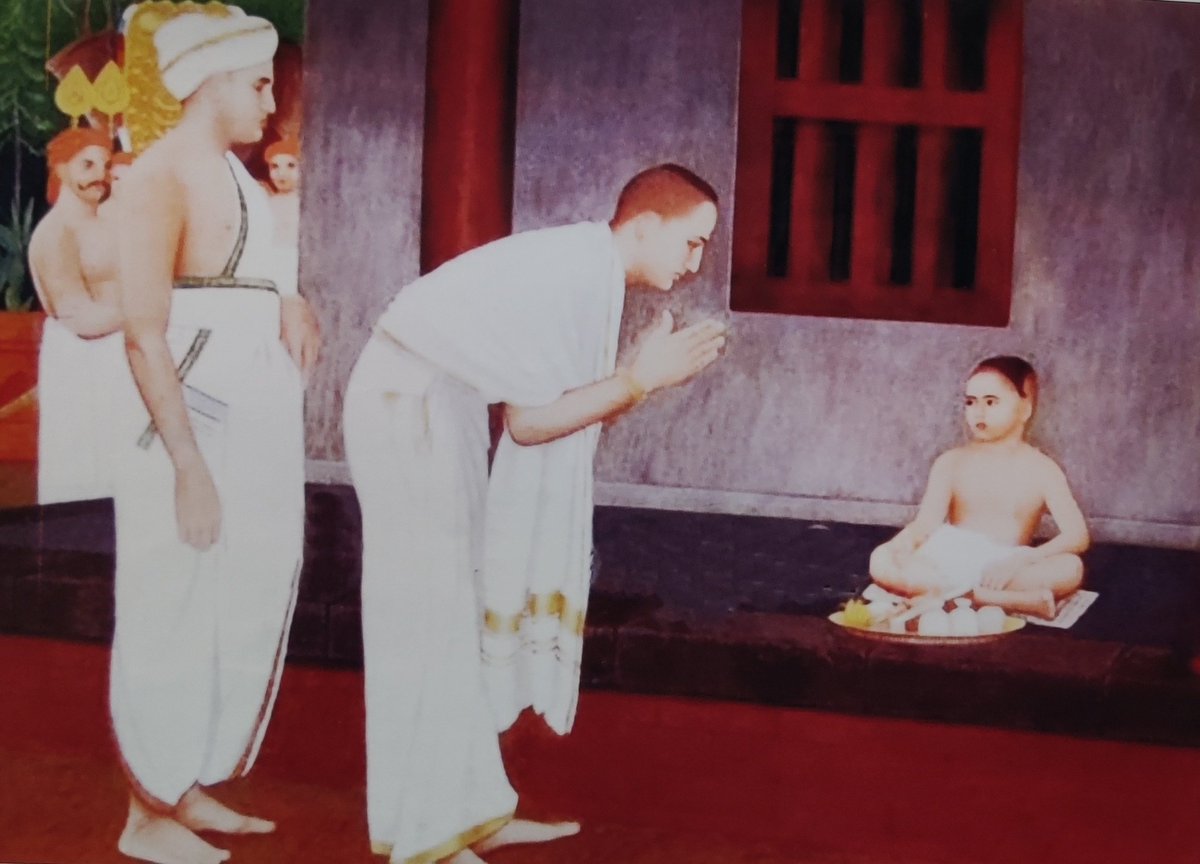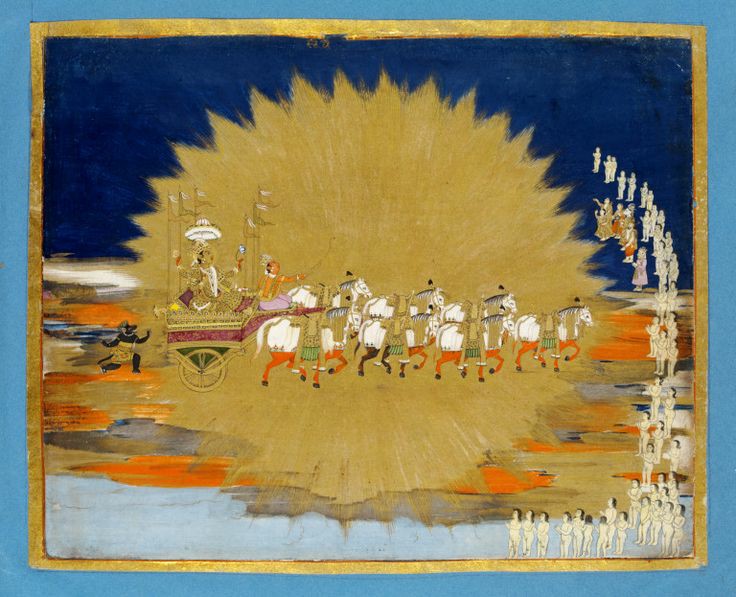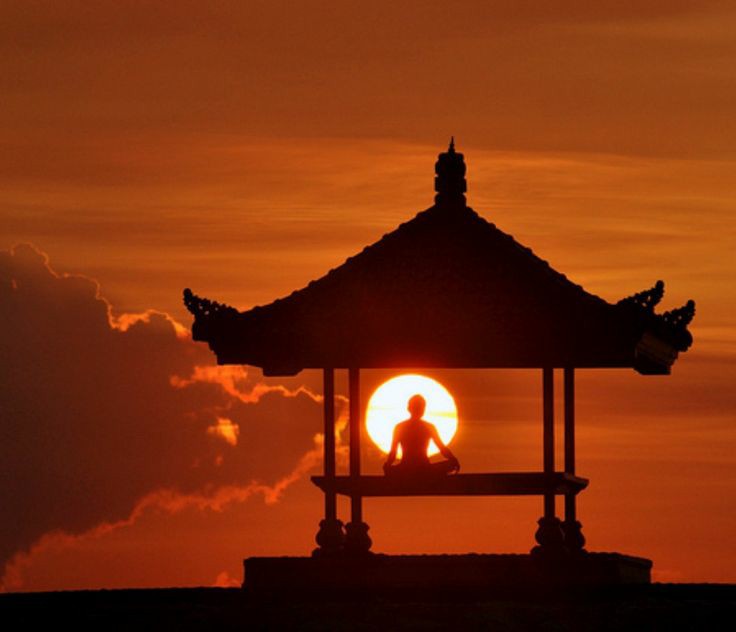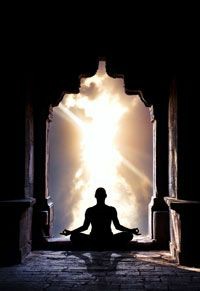
II Sri Adi Śaṅkarācārya - श्री आदि शङ्कराचार्य II
Sōpānaṁ : 8 Longing for Renunciation :
मोक्षस्य हेतुः प्रथमो निगद्यते वैराग्यमत्यन्तमनित्यवस्तुषु।
ततः शमश्चापि दमस्तितिक्षा न्यासः प्रसक्ताखिलकर्मणां भृशम्॥६९॥
{Vivekacūḍāmaṇi}
#Thread
Sōpānaṁ : 8 Longing for Renunciation :
मोक्षस्य हेतुः प्रथमो निगद्यते वैराग्यमत्यन्तमनित्यवस्तुषु।
ततः शमश्चापि दमस्तितिक्षा न्यासः प्रसक्ताखिलकर्मणां भृशम्॥६९॥
{Vivekacūḍāmaṇi}
#Thread

"Intense dispassion towards ephemeral objects is the first pre-requisite for 'moksha’(liberation). After that, ‘sama’ that which restrains the mind, ‘Dama’ that high controls the senses, ‘titiksha’, forbearance to accept destiny, & renunciation of all motivated actions, should be
developed."
ततः श्रुतिस्तन्मननं सतत्त्वध्यानं चिरं नित्यनिरन्तरं मुनेः।
ततोऽविकल्पं परमेत्य विद्वानिहैव निर्वाणसुखं समृच्छति॥ ७०॥
{Vivekacūḍāmaṇi}
"Thereafter, listening to the ‘mahavakyas’ of Vedanta, reflecting thoroughly on their implied meaning, & uninterrupted meditation
ततः श्रुतिस्तन्मननं सतत्त्वध्यानं चिरं नित्यनिरन्तरं मुनेः।
ततोऽविकल्पं परमेत्य विद्वानिहैव निर्वाणसुखं समृच्छति॥ ७०॥
{Vivekacūḍāmaṇi}
"Thereafter, listening to the ‘mahavakyas’ of Vedanta, reflecting thoroughly on their implied meaning, & uninterrupted meditation

holding on to the intuitive glimpse of the Truth, must follow. The dispassionate ‘Muni’, who practices in this manner, experiences the joy of ‘Nirvana’ here & now through ’Nirvikalpa samadhi".
Scriptures use the term ‘Nirodha’ for ‘Sanyasa’. ‘Nirodha’ means ‘cessation’.
Scriptures use the term ‘Nirodha’ for ‘Sanyasa’. ‘Nirodha’ means ‘cessation’.
'Naradasutra’ states ‘ निरोधस्तु लोकवेदव्यापारन्यासः ‘ (Sutra 8 ) - Nirodha means transcending all worldly or Vedic interactions’. The determination to follow such a path of ‘Sanyasa’ arose in the mind of Śaṅkarā.
Acharya states in
Acharya states in
Brahma Sūtra bhāṣya ;
‘आत्मनि वर्ण-आश्रम-वय-अवस्थादि -विशेष-अध्यासम् आश्रित्य प्रवर्तन्ते शास्त्राणि I atmavigyanat pracra pravatraman sastra avidyavishayatva nati vartatey ‘ - Śāstras prescribe ‘dharma’ by superimposing ‘varna’, ‘aśram’, age, & the like on the Self. This
‘आत्मनि वर्ण-आश्रम-वय-अवस्थादि -विशेष-अध्यासम् आश्रित्य प्रवर्तन्ते शास्त्राणि I atmavigyanat pracra pravatraman sastra avidyavishayatva nati vartatey ‘ - Śāstras prescribe ‘dharma’ by superimposing ‘varna’, ‘aśram’, age, & the like on the Self. This

superimposition a well as the ‘dharma’ or the law of living prescribed by the Vedas, exist within the periphery of ignorance. Hence they are meant for the laymen & told their authority only until realisation of the Self.’
Renunciation of Vedic rituals is permitted only for those
Renunciation of Vedic rituals is permitted only for those
who are qualified for 'Sanyasa'.
A ‘sanyasi’is one who has completely surrendered himself to the Lord. A true ‘Sanyasi’ purifies his lineage, makes his mother’s life divinely fruitful & the very earth where he took birth becomes sacred.Although the decision to take up such a
A ‘sanyasi’is one who has completely surrendered himself to the Lord. A true ‘Sanyasi’ purifies his lineage, makes his mother’s life divinely fruitful & the very earth where he took birth becomes sacred.Although the decision to take up such a
‘Sanyasa’ was forming in Śaṅkarā’s mind, how could he console his ‘Aryambadevi’ ? Relatives might help in taking care of her physical needs, but it was very difficult to ignore the obligations of a son towards his mother.
The Arrival of a Divine Sage :
One day, a large group of ascetics arrived at the village, ‘Kaladi’. They reached the house of Sivaguru, which was a permanent refuge for wandering monks.The elderly Brahmana welcomed the ‘Sanyasis’ with due reverence, & made arrangements for their
One day, a large group of ascetics arrived at the village, ‘Kaladi’. They reached the house of Sivaguru, which was a permanent refuge for wandering monks.The elderly Brahmana welcomed the ‘Sanyasis’ with due reverence, & made arrangements for their
stay under a huge Ingudi tree in front of the house. As these ‘Sanyasis’ followed the rule of not entering the house of ‘grhasthas’, they stayed under the tree happily.
After a while, a radiant Śaṅkarā, who was just 8 years old, entered the courtyard, after completing his
After a while, a radiant Śaṅkarā, who was just 8 years old, entered the courtyard, after completing his

‘madhyahnika’ (noon-worship) from ‘Purna’.The yogis gazed at him with wonder, Śaṅkarā was seeing such a large group of ‘Sanyasis’ for the first time. Amidst them was an elderly radiant being, short-statured, well built & with thick matted hair. The child prostrated before the
elderly austere figure with due reverence.
(Pls read the attached 👇conversation)
After this incident, Śaṅkarā was always seen to be in solitude & engaged in meditation. The elders of the family thought, ‘Sivaguru’s serious disposition is reflected in his son.


(Pls read the attached 👇conversation)
After this incident, Śaṅkarā was always seen to be in solitude & engaged in meditation. The elders of the family thought, ‘Sivaguru’s serious disposition is reflected in his son.
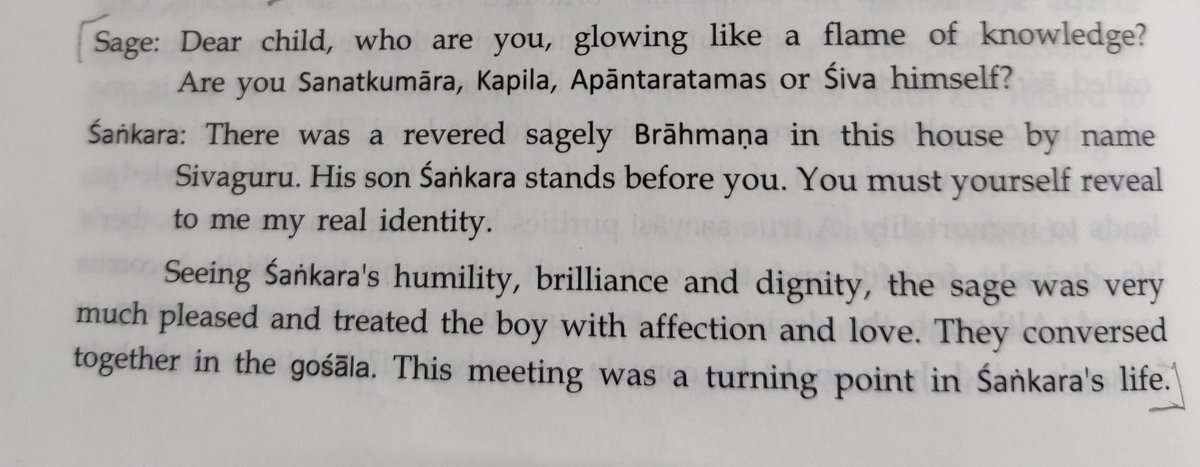


‘Atma vai pura Nama is’ - ‘one indeed takes 2nd birth as the son’ - is the Vedic statement.
Meanwhile one day, Śaṅkarā gently broached the topic to his mother that he wished to take ‘Sanyasa’ & go to ‘Omkareswara’ to meet ‘Govinda Bhagavadpada’. These words were like a
Meanwhile one day, Śaṅkarā gently broached the topic to his mother that he wished to take ‘Sanyasa’ & go to ‘Omkareswara’ to meet ‘Govinda Bhagavadpada’. These words were like a
thunderbolt to the mother.She wailed & even scolded out of maternal affection.
Seeing this,Śaṅkarā consoled his mother calmly,“Mother, मात्रुमान् पित्रुमान् अचार्यवान् वेद ‘- ‘Đ first teaching is from the mother, then from the father, then from the Acharya’ so says the ‘sruti’.
Seeing this,Śaṅkarā consoled his mother calmly,“Mother, मात्रुमान् पित्रुमान् अचार्यवान् वेद ‘- ‘Đ first teaching is from the mother, then from the father, then from the Acharya’ so says the ‘sruti’.
So I will not do anything without your permission.”
As though sensing the shadow of the forthcoming events, ‘Aryamba’ became broodingly quiet. She did not presume that the decision of her son which was founded on deep dispassion would so easily change.
The change in the course
As though sensing the shadow of the forthcoming events, ‘Aryamba’ became broodingly quiet. She did not presume that the decision of her son which was founded on deep dispassion would so easily change.
The change in the course
of the river ‘purna’ had greatly damaged the vishnu temple on its banks. scorpions, snakes & crocodiles from the forests had also started flowing down the river. So the villagers decided to install the idol of Vishnu at a greater height & constructed a temple. The temple 

construction & installation of the idol took place without much delay.
Śaṅkarā worshipped Sri Nārāyaṇa by composing a beautiful ‘Bhujanga Prayāta’ :-
II श्रीविष्णुभुजङ्गप्रयातस्तोत्रम् II
चिदंशं विभुं निर्मलं निर्विकल्पं
निरीहं निराकारमोङ्कारगम्यम् ।
(Stotram👇)

Śaṅkarā worshipped Sri Nārāyaṇa by composing a beautiful ‘Bhujanga Prayāta’ :-
II श्रीविष्णुभुजङ्गप्रयातस्तोत्रम् II
चिदंशं विभुं निर्मलं निर्विकल्पं
निरीहं निराकारमोङ्कारगम्यम् ।
(Stotram👇)


After the consecration, Śaṅkarā stepped into the river for ‘mangalasnana’ (the concluding sacred bath). Neck-deep in
water, he stood facing the sun, meditating.
Vishnu & some others were with him. His mother was watching him from a distance. Suddenly there was a big thud in the water. Water splashed everywhere. Turmoil arose as people screamed, “ Crocodile ! Crocodile ! ”
Vishnu & some others were with him. His mother was watching him from a distance. Suddenly there was a big thud in the water. Water splashed everywhere. Turmoil arose as people screamed, “ Crocodile ! Crocodile ! ”
Alarmed, Aryamba cried aloud, “Oh Śaṅkarā has been caught by the crocodile, Devi Kātyāyani.” Bold men tried their best to save Śaṅkarā but without success. In the struggle to get free from the clutches of crocodile Śaṅkarā was often seen in & out of the splashing water. 

With all his might he cried out, Mother, at least now permit me to embrace ’Sanyasa’. Bless me that I may enter ‘Turiyasrama’ ( the 4th stage of Life ) before death claims this body.”
Hearing this, the mother sincerely prayed aloud, “O Lord of Vrishabhāchala,if by becoming a
Hearing this, the mother sincerely prayed aloud, “O Lord of Vrishabhāchala,if by becoming a

‘Sanyasi’, Śaṅkarā gets a longer lifespan, let it be so.”
To the joyous astonishment of one & all, at that moment, the crocodile left Śaṅkarā and swam away.
Thus ends the eighth Sōpānaṁ.
I ओम् तत् सत् I
I Om Tat Sat I
To the joyous astonishment of one & all, at that moment, the crocodile left Śaṅkarā and swam away.
Thus ends the eighth Sōpānaṁ.
I ओम् तत् सत् I
I Om Tat Sat I

@RituRathaur @ikkmurugan @Mishti_in @shallakaul @youngndharmic @BeenaPP1 @Manushi64428902
@mahesh8524 @ignisfatuus1110
@InfoVedic @geetaraavi @Isha_Sattva @itishree
@kachnarr @kr_ratansinghs @dil_se_ree @drvikaspadha @apparrnnaa @lokagatha @Anku_5789
@mahesh8524 @ignisfatuus1110
@InfoVedic @geetaraavi @Isha_Sattva @itishree
@kachnarr @kr_ratansinghs @dil_se_ree @drvikaspadha @apparrnnaa @lokagatha @Anku_5789
@bharatiyaseeker @DeepaShree_AB @priya_27_
@apparrnnaa @DivineElement
@oneternalvigil
@priyamvada22s @paperrose3k @_myselfjolly @ushanirmala @rudraashiv @bangadvedant
@krishnadharma
@madhvahistory
@aneelgs @slickindo @vparamaguru1 @armykafan @jyoitas @vyasonmukh
@rathvas7
@apparrnnaa @DivineElement
@oneternalvigil
@priyamvada22s @paperrose3k @_myselfjolly @ushanirmala @rudraashiv @bangadvedant
@krishnadharma
@madhvahistory
@aneelgs @slickindo @vparamaguru1 @armykafan @jyoitas @vyasonmukh
@rathvas7
• • •
Missing some Tweet in this thread? You can try to
force a refresh









